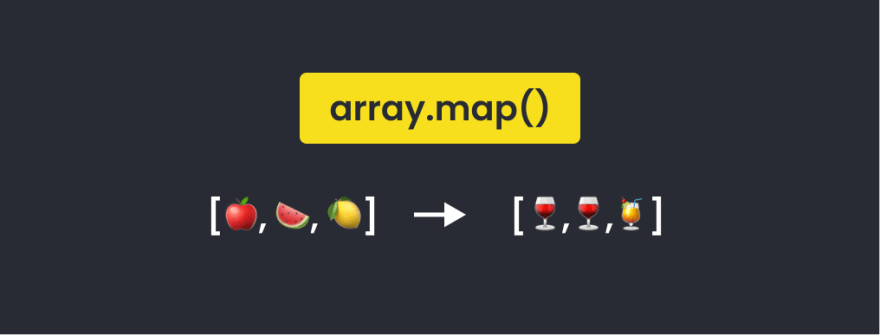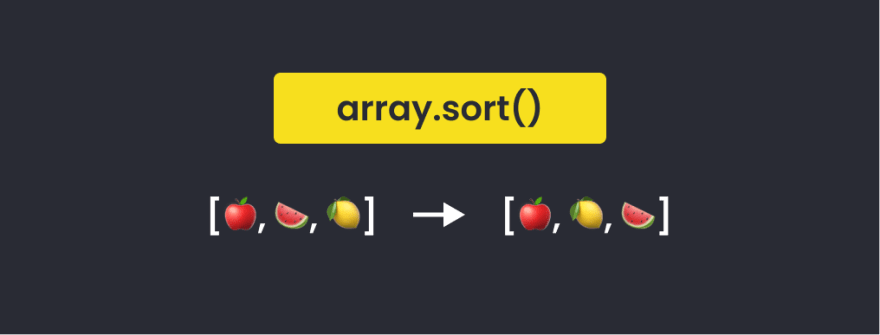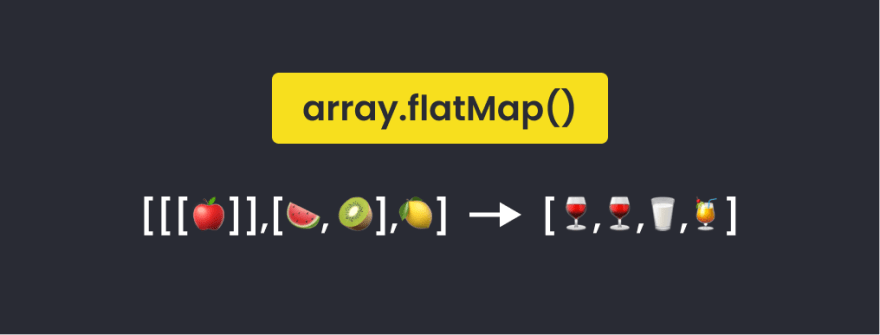An Interest In:
Web News this Week
- April 24, 2024
- April 23, 2024
- April 22, 2024
- April 21, 2024
- April 20, 2024
- April 19, 2024
- April 18, 2024
Javascript - Into The Loop of Arrays
Salam and yosh!
And this week, I want to talk something core about Javascript. Something that you cannot escape, always bothering at the end of your thought when coding, avoiding them is not an option. And that is data structures. Yes, the basics of data structures, but we focus on one thing - [array].
You will always deal with arrays. Sooner or later, it will haunt your mind. What method should I use? How to manage arrays? How does array works?
In the Javascript world, an array is actually an object, with the ability to loop within the array items, since the index is arranged accordingly, so the loop will go through the index sequence. Starting from 0. Wait, starts from 0?
Array
An object, with number as an index. Note that it is how the array works in Javascript, and not entirely applicable to other languages such as Python and others.
With a number as an index, it is possible to follow the sequence, starting from 0. As bit starts with 0, that is why the array starts with 0 and not 1. Because the index is arranged in sequence, it is possible to loop every element inside an array.
There are a lot of methods that can be used to loop through an array, with each of them serving a specific purpose, whether it modifies the array directly, or returning a new array or a value.
The Normal Loop
Of course, Javascript has loops as other languages have, and they are for, while and do...while.
for(let i = 0; i < 10; i++) { // This loop will execute 10 times}let j = 0;while (j < 10) { // Same here j++;}let k = 0;do { // Just the same, except the checking happens // after execution, opposite to `for` and `while` loop k++;} while(k < 0);Of course, there's nothing wrong with the usual loop method. Well, wait until you deal with the array. But here's a good thing about array. Every array has its own length by accessing array.length. Why not use this information for the loop?
for For Array
For the first step, there is a for loop that is specifically for array, and that is for...of.
const fruits = ['Durian', 'Rambutan', 'Nangka'];for(let fruit of fruits) { console.log(fruit);}/* The output should be:DurianRambutanNangka*/Not to be confused, that there is actually a similar loop to this, which is for...in which actually meant for an object instead and not array (yes, I know array also objects in Javascript, but that how it works!).
const user = { fname: "Atif", lname: "Aiman", nname: "al-Serembani" };for(let key in user) { console.log(user[key]);}/* The output should be:AtifAimanal-Serembani*/For a Better Loop - Array Methods!
Well, it is cool that we have for...of to loop through an array, but there is a cooler way to loop through, and that is using array methods! There are tons, but with their own purposes. They are:
forEachmapreduceandreduceRightfilterfindandfindIndexsomeandeverysortflatMap
Since they are methods, the usage is not like the pattern we used before, but chained with the array itself.
Let's learn about them one by one, shall we?
array.forEach
forEach is just like our typical for...of loop. It does not return anything, and didn't change the existing array.
const fruits = ['Durian', 'Rambutan', 'Nangka'];fruits.forEach((fruit) => { console.log(fruit);}/* The output should be:DurianRambutanNangka*/To explain a bit (will behave similarly across array methods later on), we loop through fruits array using forEach, and we pass fruit for the pointer that holds the element for each array element. From there, you can do anything to each element.
Since forEach didn't return any value, that means the example below doesn't work.
const result = fruits.forEach((fruit) => { return fruit + ' juice' });console.log(result); // undefinedAnd forEach didn't modify the existing array. This means the value will still same.
array.map
array.map will go through the array, and then return the same length of array with modified content. It doesn't modify the original array though.
const fruits = ['Durian', 'Rambutan', 'Nangka'];const juices = fruits.map((fruit) => { fruit.press();});console.log(juices);// ['Durian juice', 'Rambutan juice', 'Nangka juice'];As you noticed, I want to turn these fruits into juices, so I press every fruit and later I get the array of juices in return. Well, durian juice is indeed weird, but would you dare to try?
array.reduce and array.reduceRight
array.reduce will go through the array, and process everything, in return of a single value. Different with array.map that return the same length of the array of the target array. And still, not changing the original array.
const fruits = ['Durian', 'Rambutan', 'Nangka'];const salad = fruits.reduce((product, fruit) => { return product + fruit.slice();});console.log(salad);// DuRamNa Salad;What I did here, I slice every fruit there is, and mixed with the product as it accumulates, and finally, the sliced fruits will be mixed together as a salad. Durian inside salad? Think again!
So, where do you usually see reduce in action? A really basic real-world example will be sum!
const numbers = [1, 2, 3, 4, 5, 6, 7, 8, 9, 10];const sum = numbers.reduce((total, number) => { return total + number;});console.log(sum); // 55So, what if you want to do the reverse way? Instead of starting from 0, do you want to start from the last element? For that case, we use array.reduceRight! The same way of writing, except it, will start from the last index of the array.
array.filter
array.filter will loop through the array, and filter only when it matches the condition, or if it returns true. The returned array will be based on the filtered result, and it didn't change the original value.
const fruits = ['Durian', 'Rambutan', 'Nangka'];const bigFruits = fruits.filter((fruit) => { return fruit.isBig();});console.log(bigFruits); // ['Durian', 'Nangka']I want to know which one is the big fruit. So I check the size of each fruit, and I get an array of big fruit in return. And now I know which one is big, and of course, Durian, king of fruits is one of them!
array.find and array.findIndex
array.find will loop through the array, and only return one value which is the first occurrence that matches the condition. Unlike array.filter which return all that matches the condition.
const fruits = ['Durian', 'Rambutan', 'Nangka'];const bigFruit = fruits.find((fruit) => { return fruit.isBig();});console.log(bigFruit); // DurianDurian is the first fruit in the array that is big. If durian doesnt exist, nangka will be the next in line for the big fruit.
So, what if I don't want to know what fruit is big, instead I want to know the position inside the array? Then, array.findIndex will be a suitable method for you!
const fruits = ['Durian', 'Rambutan', 'Nangka'];const bigFruit = fruits.findIndex((fruit) => { return fruit.isBig();});console.log(bigFruit); // 0So, what if we cannot find anything in an array that matches the condition? Then, it will return undefined for array.find, and -1 for array.findIndex!
array.some and array.every
array.some and array.every will loop through the array, and check whether it matches the condition. While this is also achievable using array.reduce that returns a single value, array.some will return true if any of the element matches the condition, while array.every will return true if all elements match the condition. Both will return a boolean at the end of the day.
const fruits = ['Durian', 'Rambutan', 'Nangka'];const hasSmallFruit = fruits.some((fruit) => { return fruit.isSmall();});console.log(hasSmallFruit); // trueconst everthingBig = fruits.every((fruit) => { return fruit.isBig();});console.log(everythingBig); // falseI want to check if any of the fruit is small. Since rambutan is small, it will return true. And later on, I want to check if everything is big. Well, I might need a truck if everything is big!
array.sort
array.sort will loop through the array, and sort based on the condition. And of course, the return array will be at the same length, with the modified arrangement.
const fruits = ['Durian', 'Rambutan', 'Nangka'];const sortedFruit = fruits.sort((fruitA, fruitB) => { if (fruitA > fruitB) return 1; else if (fruitA < fruitB) return -1; else return 0;});console.log(sortedFruit); // ['Nangka', 'Durian', 'Rambutan']Here, I want to sort fruits based on their size. During the loop, it will take 2 parameters, the first fruit fruitA and the second fruit fruitB. It can be any first and any second, it will be managed by the sort function. Later, I compare them head-on to see which is the biggest of all fruits in this land.
If it returns a positive number, it will put the first fruit in front.
If it returns a negative number, it will put the first fruit at the back.
If it returns 0, it will just put as it is, since rearrange them doesn't matter, anyway.
As a result, now I know, even durian is the king of fruits, there is still bigger fruit which is nangka, so durian shouldn't feel too superior though.
So, how about making reverse sort? Just change from positive return to negative return, and that's it! You will get reverse sort!
Another thing. Is there a default sort method, so I don't have to pass a function to sort it? Of course, you can! If they are numbers, they will be sorted based on the number, and if it is a string, then it will be sorted based on the letter position in ASCII.
const fruits = ['Durian', 'Rambutan', 'Nangka'];const sortedFruit = fruits.sort();console.log(sortedFruit); // ['Durian', 'Nangka', 'Rambutan'] array.flatMap
Well, it actually work the same way with array.map before, except that we are dealing with nested arrays.
Actually, there is one array method called array.flat, where it changes from the nested array (or non-single dimension array) and flat everything to only single dimension array. It is not a loop method, so that's why I didn't list it down.
Combining the power of array.flat and array.map, the result is array.flatMap, where it returns a new length of the flattened array.
That's About It!
These are array methods you can use inside Javascript. It matches the ES2020 syntax, so you are welcome to use it.
Note that all of the loop array methods didn't modify the original array, so you don't have to worry. It will return a new value to their respective return method.
Awesome, now you know basic things about array loop methods! Well, only if the data structure is simple that is! What if you are dealing with a nested array or objects inside arrays? Only practice will reveal everything for you. Still, you still need to use these methods. How complex can you make your loop?
Okay guys! That's it for this week, and stay tuned! Until next time, peace be upon ya!
Original Link: https://dev.to/alserembani/javascript-into-the-loop-of-arrays-51ep
Dev To
 An online community for sharing and discovering great ideas, having debates, and making friends
An online community for sharing and discovering great ideas, having debates, and making friendsMore About this Source Visit Dev To









